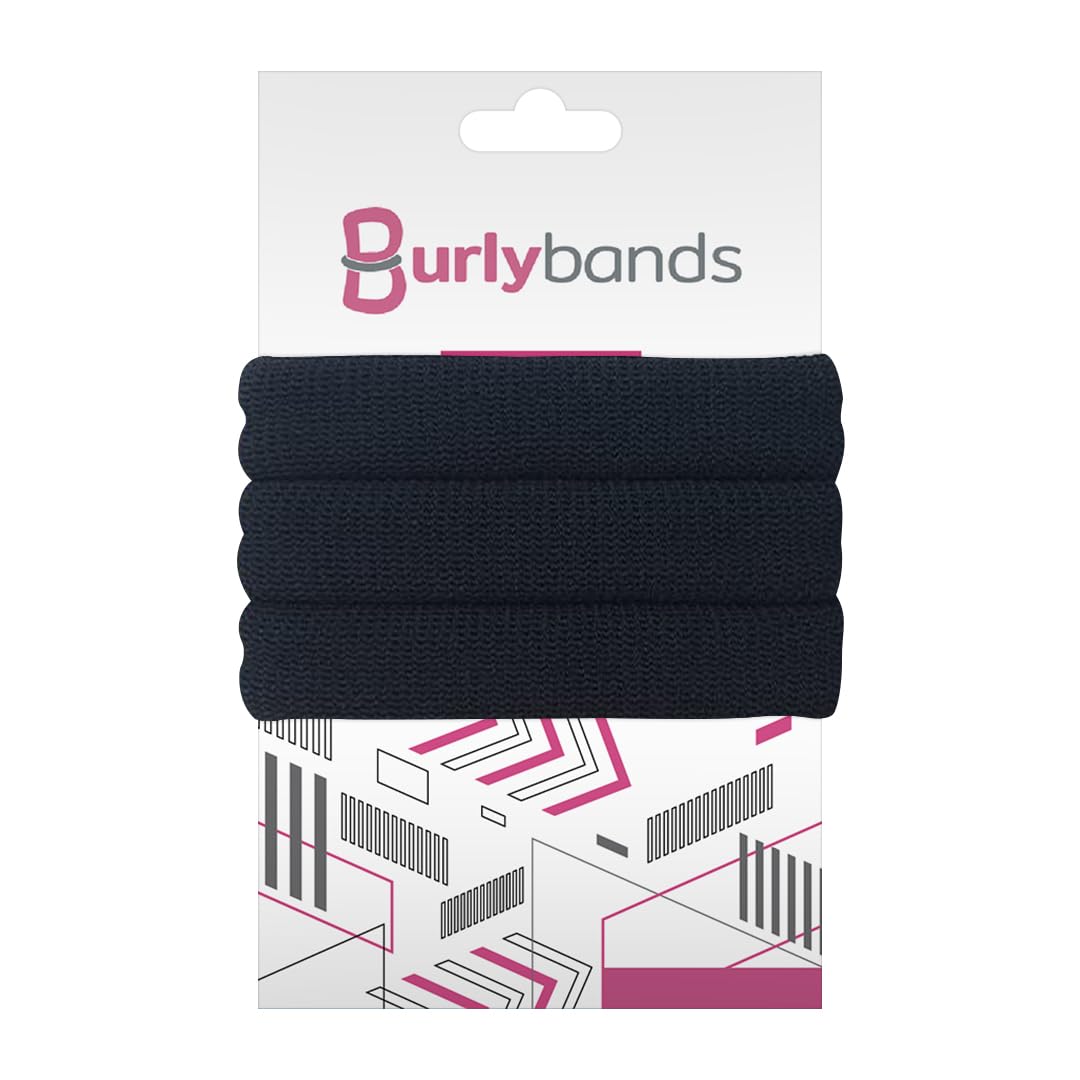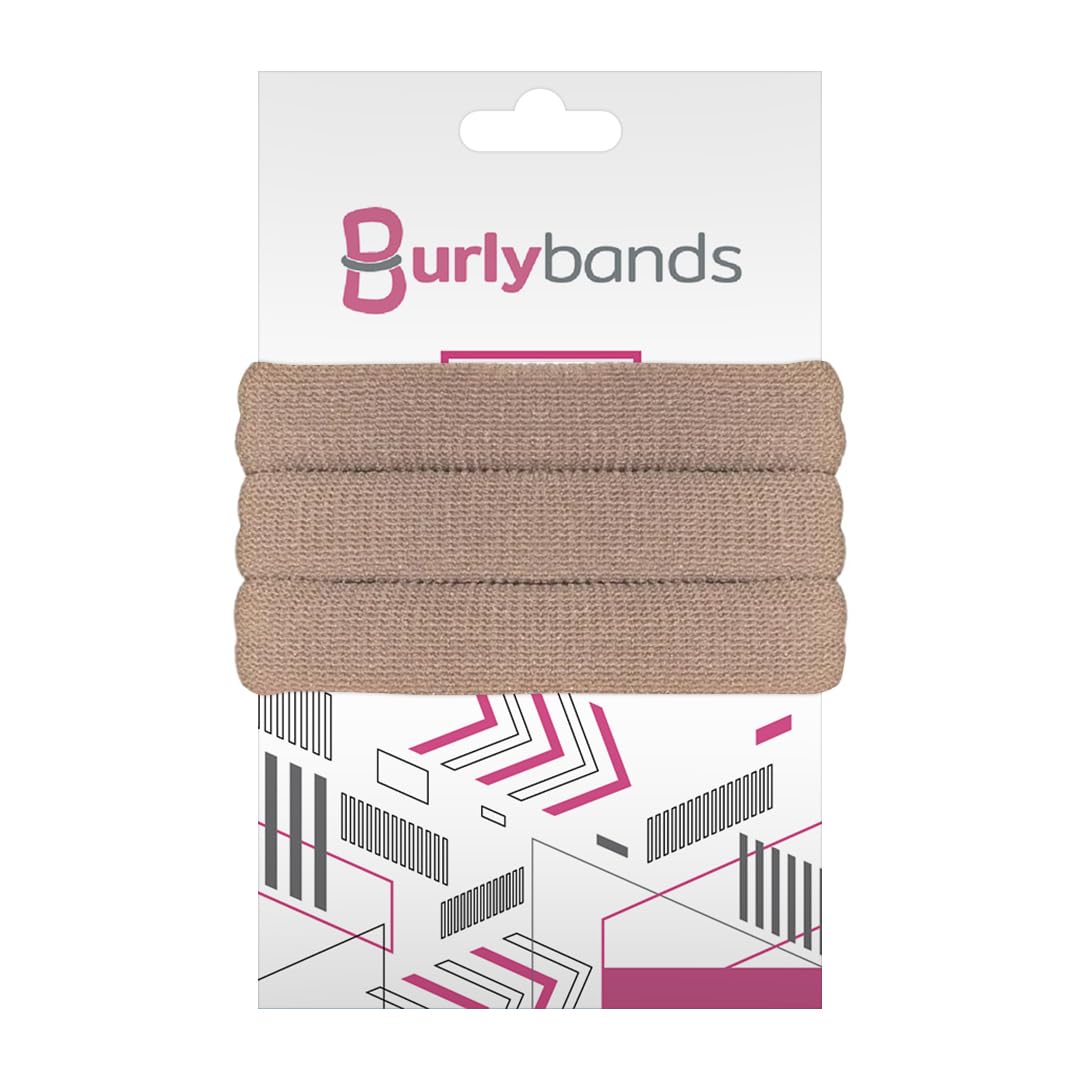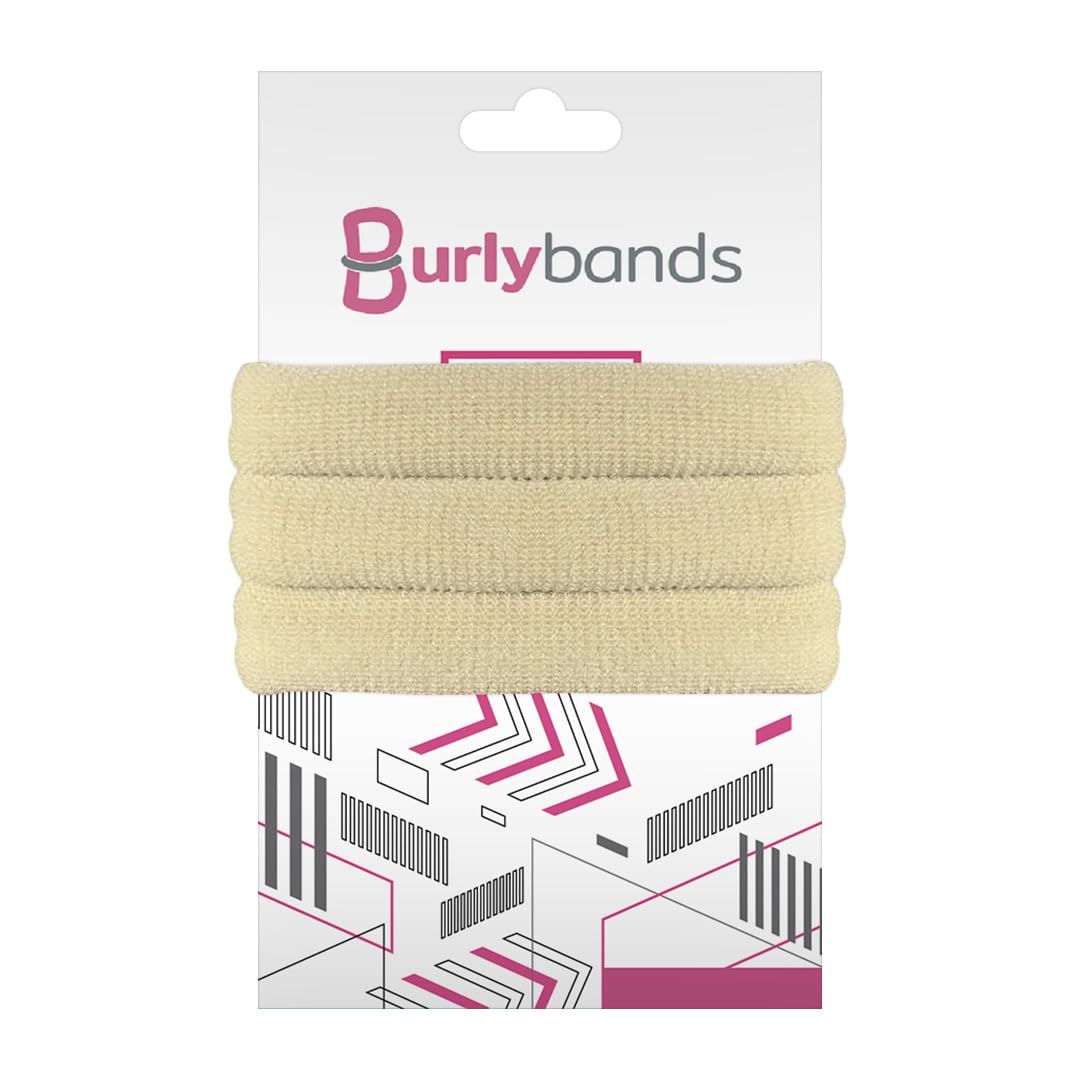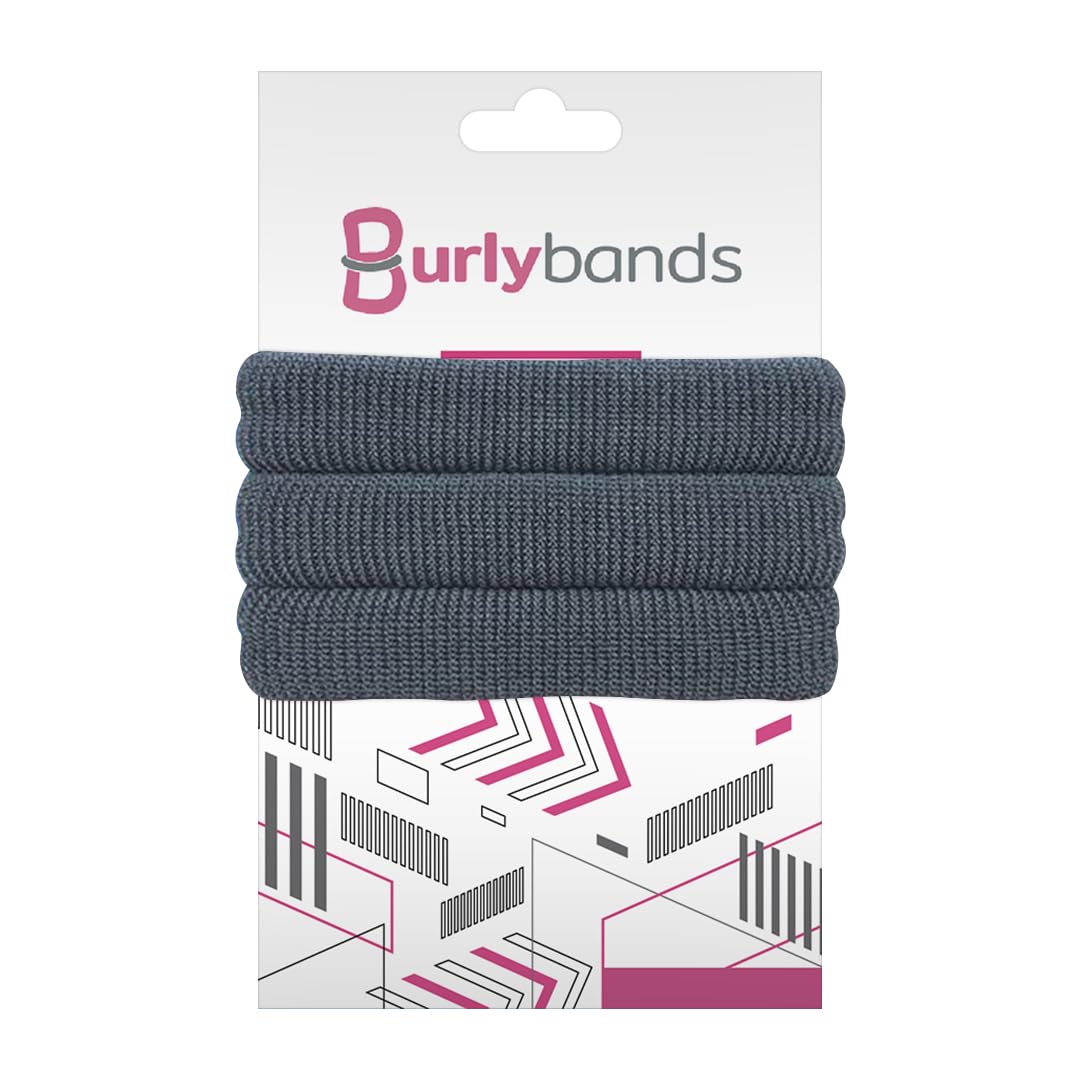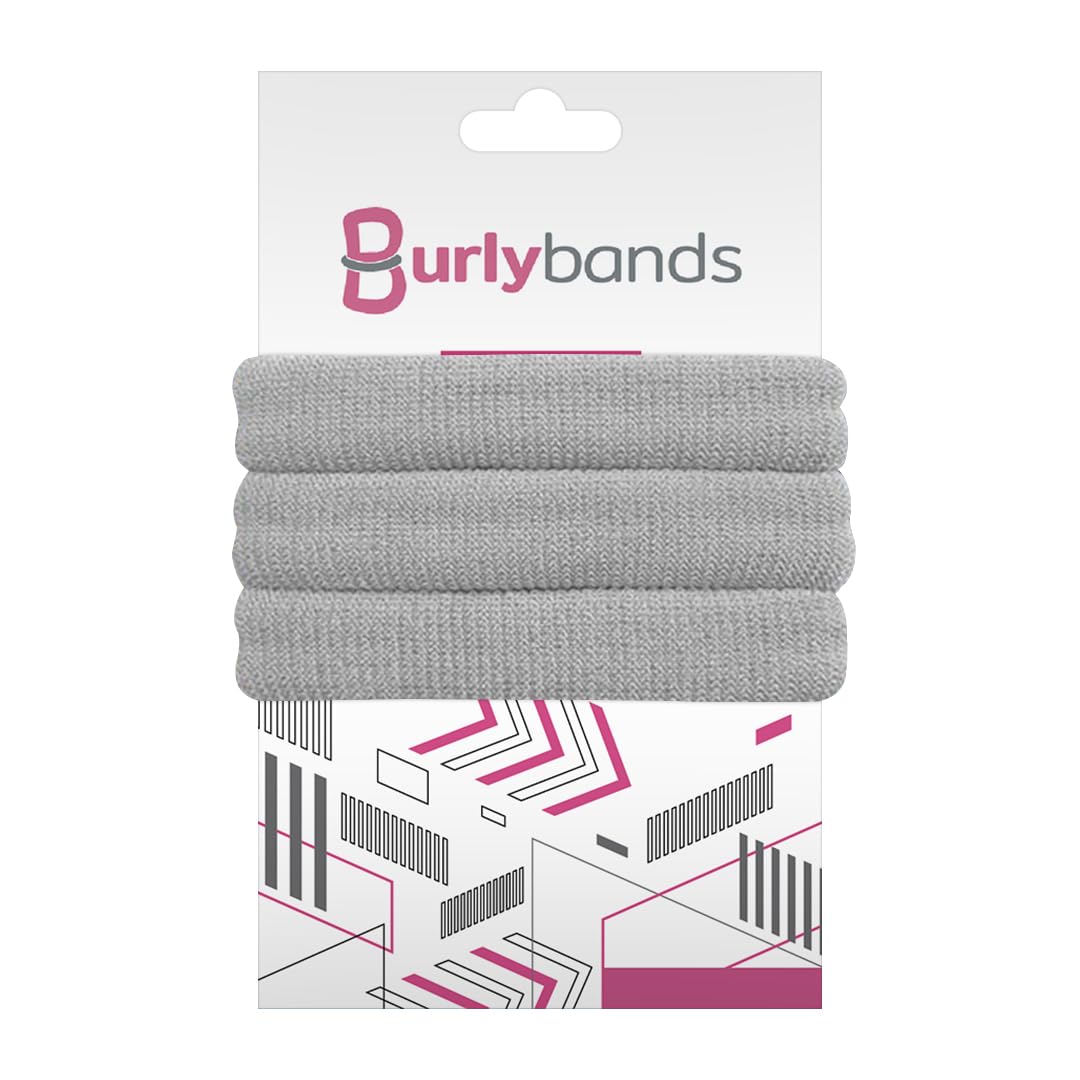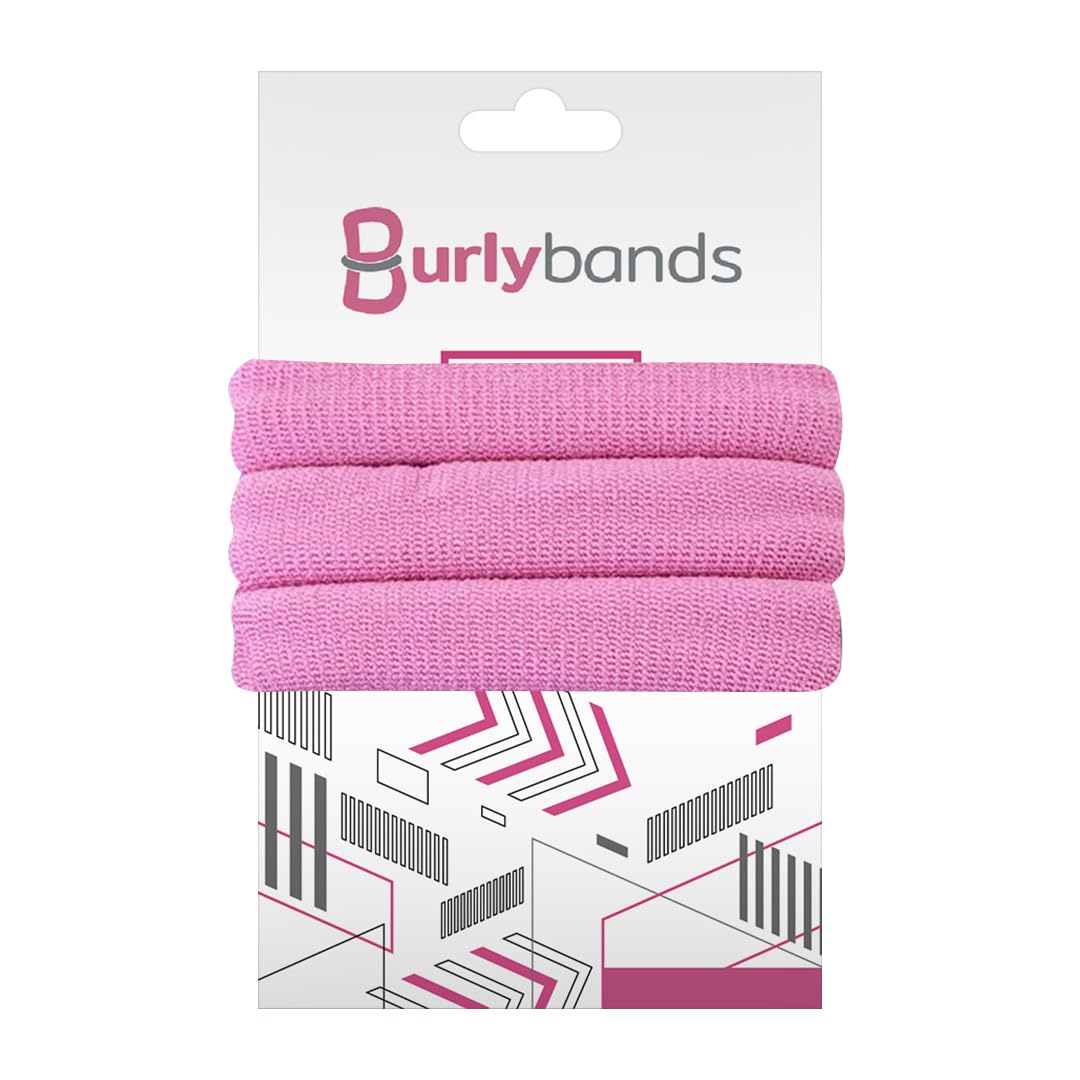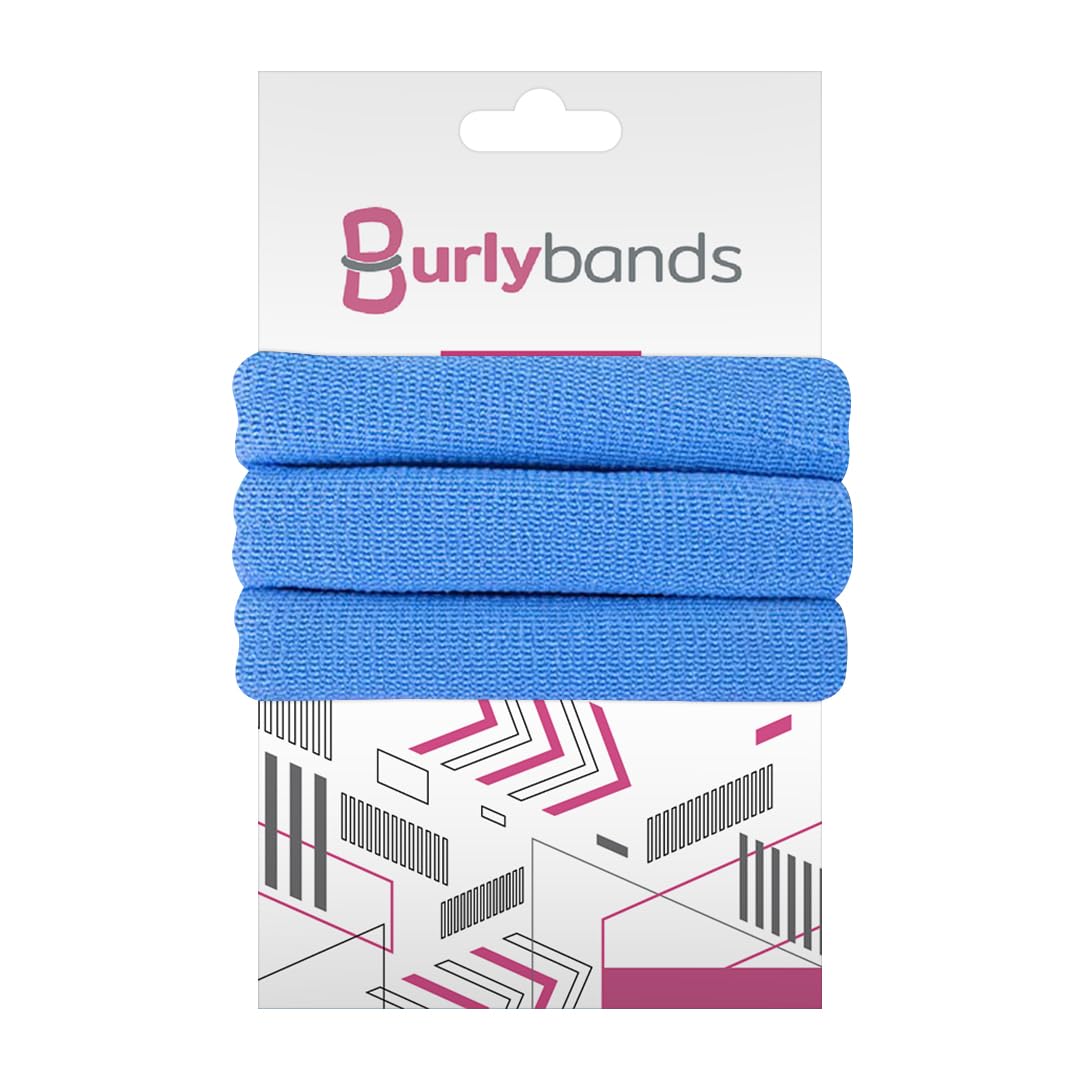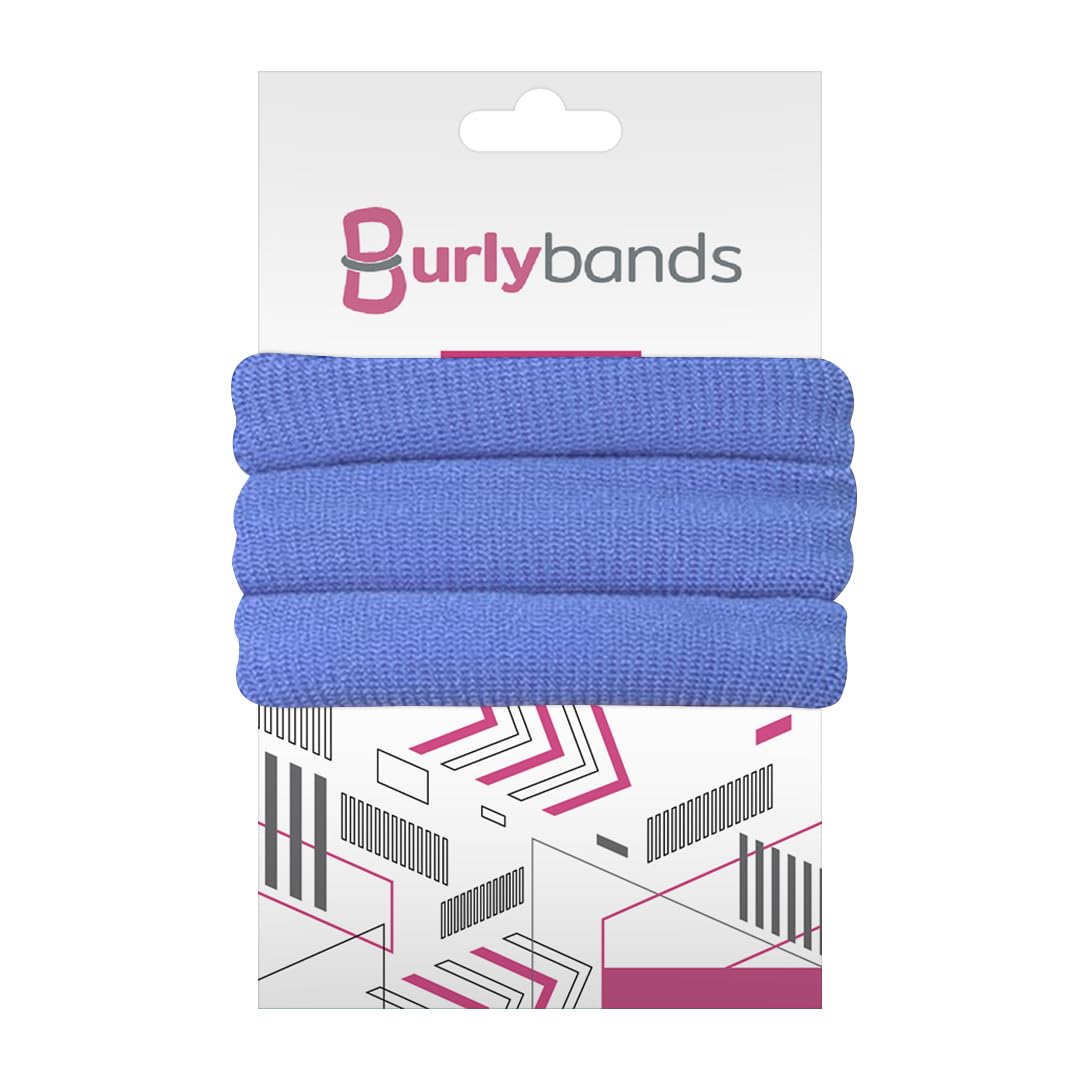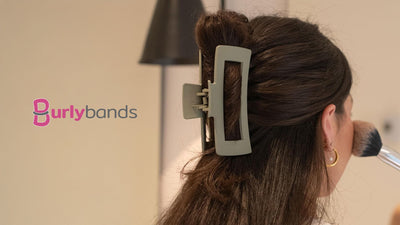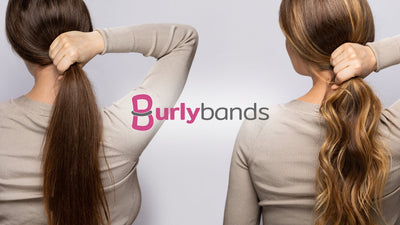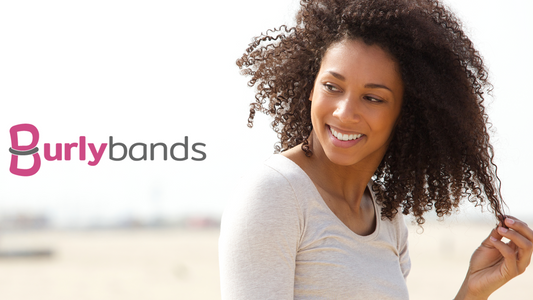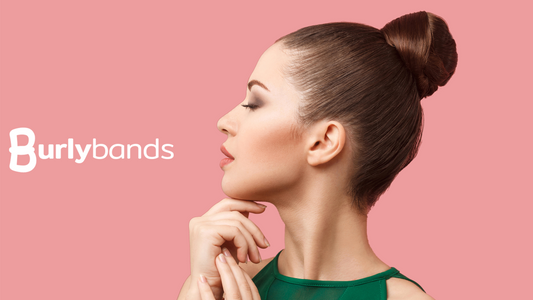When you think of getting ready for a workout, you might picture putting on the right shoes, choosing comfortable clothing, and maybe even packing a water bottle or snack. But one important aspect that many people overlook is tying their hair back. Whether you have long locks or a short crop, tying it back can have a significant impact on your workout. In this blog, we'll explore the importance of hair tying and discuss some creative hairstyles to help you style your hair for your next workout.
The Importance of Tying Your Hair During Exercise
There are several compelling reasons why it is crucial to tie your hair when you are working out. Here are a few of them:
1) Avoids Injuries and Hazards

Credit: Envato Elements/ LightFieldStudios
One of the main reasons why you should tie your hair back when exercising is safety. Long hair can be a major distraction when you're working out, particularly when you're performing high-intensity exercises like running or jumping. Loose hair can get caught in gym equipment, such as weights, resistance bands, and cardio machines, which can lead to injuries and accidents.
Moreover, long hair can also obstruct your vision, making it difficult to see your surroundings and other people around you. This can be especially dangerous if you're exercising in a group or in a crowded gym. Tying your hair back ensures that it's out of the way and won't get in the way of your workout.
2) Prevents Hair Damage and Breakage
Loose hair during exercise can be a recipe for disaster, causing hair damage and breakage. During physical activity, your hair can become entangled and pulled in different directions, resulting in split ends, breakage, and other forms of damage. Individuals with longer hair are particularly prone to tangling and breakage.
By tying your hair back, you can prevent it from becoming entangled and keep it in place, thus reducing the risk of damage. This will not only help to keep your hair healthy and strong but also save you from the hassle of dealing with tangled post-workout hair.
3) Maintains Hygiene and Prevents Acne

Credit: Envato Elements/ YuriArcursPeopleimages
Maintaining proper hygiene during exercise is crucial for keeping your skin healthy and free from acne and other issues. Loose hair can trap sweat and bacteria against your scalp, creating a breeding ground for skin problems.
To prevent such issues, it's essential to tie your hair back during exercise. This simple step allows air to circulate around your head and scalp, thereby preventing bacteria buildup which can lead to unpleasant odors. Moreover, this will also help to keep sweat away from your face and eyes, preventing potential breakouts.
4) Helps You Feel More Confident and In Control
In addition to the practical benefits of hair tying, there may also be psychological benefits. Some people report feeling more confident and in control when their hair is tied back during exercise. It can create a sense of focus and discipline, and can even make you feel more powerful. This is especially true for people who have a specific hairstyle that they associate with exercise, such as a high ponytail or braids. Wearing this hairstyle can create a mental shift and help you get into the right mindset for a workout.
Maximizing Comfort and Safety for Your Gym Workout: The Dos and Don'ts of Tying Your Hair Back When Exercising
When it comes to exercising, tying your hair back is a common practice to keep it out of your face and prevent it from getting tangled or damaged. However, it's essential to do it properly to avoid discomfort, damage, or even injury. Whether you're a doing high-intensity cardio workout or gentle yoga, there are specific dos and don'ts to keep in mind.
Do Choose the Right Hair Ties for the Gym

Credit: Envato Elements/ leungchopan
Choosing the right hair tie is crucial for anyone who exercises regularly. Not only can the wrong hair tie cause discomfort, but it can also lead to hair breakage, scalp irritation, and other hair-related issues. Fortunately, there are a few key things to look for when selecting a hair tie that will keep your hair secure and comfortable while you work out.
Firstly, it's important to choose a hair tie that is specifically designed for gym or exercise. These hair ties are designed to prevent pulling and tugging on your hair, and they are less likely to slip or come loose during high-intensity activities. Some gym hair ties even feature specialized grips or textures that help them stay in place, even during strenuous workouts.
In addition to design, the material is another critical factor to consider when selecting a hair tie. The majority of gym hair ties are made of lightweight, quick-drying synthetic materials like polyester or nylon. However, some people may prefer natural materials like cotton or bamboo, which are more breathable and less likely to cause scalp irritation. The best material for your hair tie will depend on your personal preferences and any sensitivities you may have.
Lastly, it's crucial to avoid hair ties with metal or seams. These elements can cause hair breakage, tangles, and even snagging, leading to long-term hair damage. When selecting a hair tie, opt for seamless and metal-free options to protect your hair from unnecessary damage.
Don’t Tie Your Hair Back Too Tightly

Credit: Envato Elements/ leikapro
It's important to be mindful of how tightly you tie your hair back, as it can have negative consequences for both your hair and your comfort. When you tie your hair back too tightly, you can create tension on your scalp which can lead to headaches and even hair loss over time. Additionally, hair that is tied back too tightly is more prone to breakage, which can leave your hair looking damaged and unhealthy.
To avoid these issues, it's important to find a comfortable and secure fit for your gym hair tie. This means choosing a hair tie that is the right size and tension for your hair type and texture. If you're not sure what size gym hair tie to use, try experimenting with different sizes until you find one that feels snug but not too tight. You should be able to move your head and neck without feeling any pulling or discomfort.
Do Style Your Hair Differently for Your Workout

Credit: Envato Elements/ imagesourcecurated
Experimenting with different workout hairstyles is an excellent way to find the best style for your workout routine. Depending on your hair type and length, certain hairstyles may work better than others. When selecting a hairstyle, it is also important to consider the type of exercise you will be doing. For high-intensity activities like running or cardio, you need a hairstyle that will keep your hair secure and out of your face. Here are some hairstyles that work well for high-intensity workouts:
- High Ponytail: A high ponytail is a classic and practical hairstyle for high-intensity workouts. It keeps your hair out of your face and neck and is easy to maintain. You can also add a headband to keep flyaway hair under control. For added style, you can also try a ponytail braid.
- Braids: Braids are another excellent option for high-intensity workouts. They keep your hair in place and prevent it from getting tangled. You can opt for a single braid down your back or two braids on either side of your head.
- Bun: A top knot, messy bun, braided bun, or regular bun is an excellent workout hairstyle for those with long hair. It keeps your hair secure ensuring that it won't get in the way during your workout. You can secure your bun with hair ties or bobby pins.
For low-intensity workouts such as barre, Pilates, and yoga you want a comfortable workout hairstyle. Here are some hairstyles that work well for low-intensity workouts:
- Low Ponytail: A low ponytail or regular ponytail is a great option for low-intensity workouts. It keeps your hair secure without being as restrictive as a high ponytail. You can also add a hair band to keep your hair in place.
- Half-Up Hairstyle: A half-up hairstyle is another comfortable option for low-intensity workouts. You can secure the top section of your hair with a hair tie or clip, leaving the rest of your hair down.
- Braided Crown: A braided crown is a stylish hairstyle for low-intensity workouts. You can braid two sections of hair on either side of your head and secure them at the back with bobby pins. This hairstyle works great for short hair. If your hair is too short, you can try pigtails.
Don’t Forget to Protect Your Hair During Your Workout

Credit: Envato Elements/ Prostock-studio
Protecting your hair during a workout is essential to maintaining its health and appearance. When you tie your hair back, sweat and moisture can cause breakage, frizziness, and even scalp irritation. However, there are several effective ways to protect your hair during exercise.
One of the simplest ways to protect your hair is to use a hair product like a leave-in conditioner or hair oil. These products moisturize and nourish your hair, preventing breakage and leaving it looking healthy and shiny. Before tying your hair back for workouts, apply a small amount of the product to your hair.
Another way to protect your hair during workouts is to wear a headband or sweatband. These accessories absorb sweat and prevent it from getting into your hairline or scalp. Plus, they keep your hair out of your face, making it easier to focus on your workout.
If you're doing an outdoor workout, it's also important to protect your hair from the sun. Your hair may get dry, break, and lose color as a result of UV ray damage. To protect your hair, wear a hat or scarf that covers your head and hair. Not only will this protect your hair from the sun, but it will also help to keep you cool during your workout.
Do Wash Your Hair Regularly

Credit: Envato Elements/ micens
Washing your hair regularly is an essential part of any hair care routine, especially if you exercise regularly. When you sweat during exercise, dirt, oil, and bacteria can build up on your scalp and hair, leading to clogged pores, dandruff, and an unpleasant odor. Regular washing helps to remove these impurities and keep your hair looking and feeling clean.
How often you need to wash your hair will depend on your hair type, hair texture, and lifestyle. If you have fine or oily hair, you might need to wash it daily to keep it from looking greasy. You may be able to wash your hair less frequently if it is thick or curly since these hair types are less likely to become oily.
When washing your hair, it's essential to use a mild shampoo designed for your hair type. Avoid using hot water, as this can strip your hair of its natural oils and cause it to become dry and brittle. Instead, use lukewarm water and massage the shampoo into your scalp and hair, working from the roots to the tips. Rinse thoroughly and follow up with a conditioner to help detangle your hair and keep it soft and manageable.
In addition to washing your hair regularly, it's also important to take good care of it between washes. Avoid using harsh styling products or tools that can damage your hair, such as flat irons or curling irons. Instead, choose natural hairstyles that permit your hair to breathe and move freely.
Don’t Wear Hair Accessories That Can Cause Injury

Credit: Envato Elements/ alexstand
Hair accessories are a popular way to add some fun and personality to your workout outfit. From hair clips to bobby pins to barrettes, there are plenty of options to choose from. However, it's important to remember that hair accessories can also pose a risk of injury if they're not used properly.
One of the most common issues with hair accessories is that they can snag or pull on your hair. This is especially true in the case of metal clips which can easily catch on your hair and cause painful tugging or even breakage. To avoid this, it's best to choose clips made from plastic or other softer materials.
When wearing a headband, it's important to make sure it's snug enough to stay in place, but not so tight that it causes discomfort or headaches. A headband that's too tight can also put pressure on your scalp, which can cause pain and even hair loss over time.
It's also important to be gentle when putting on or taking off hair accessories. Try to slide them on or off slowly, rather than pulling them through your hair. And don't forget to check your hair accessories periodically during your workout to make sure they're still in place and haven't become too loose or too tight.
Do Give Your Hair a Break and Focus on Nutrition

Credit: Envato Elements/ nikki_meel
Taking care of your hair while exercising goes beyond simply tying it back correctly. Wearing hair accessories can cause tension and pressure on your scalp and hairline, leading to hair breakage, and even hair loss over time. That's why taking breaks during your workout and readjusting your hairstyle are essential.
During your break at the gym, remove your headband and massage your scalp with your fingertips. Massaging your scalp can increase blood flow and promote healthy hair growth. Similarly, if you're wearing a hair tie or ponytail, take it down and shake out your hair to relieve any pressure on your scalp and give your hair a chance to breathe.
In addition to taking breaks, nutrition is also essential for healthy hair. Eating a balanced diet with plenty of protein, healthy fats, vitamins, and minerals can provide your hair with the nutrients it needs to stay healthy and nourished. Foods like eggs, nuts, seeds, fatty fish, leafy greens, and sweet potatoes are all great options for promoting healthy hair growth and preventing hair loss. So, remember to focus on nourishing your hair from the inside out for optimal hair health.
What Can You Use to Tie Your Hair During a Workout?
There are a few options for tying your hair during a workout, depending on your hair type and the intensity of the activity:
1) Hair Ties or Elastic Bands

Credit: Envato Elements/ _viledevil
Hair ties or elastic bands are the most common and convenient option. They come in various sizes and materials, including cloth, silicone, and elastic. Elastic bands work well for thicker hair, while cloth and silicone ones are gentler on the hair and less likely to cause breakage.
2) Bungee Hair Ties
Bungee hair ties are made from a stretchy cord with a plastic or metal hook at each end. They are designed to wrap around the hair and hook onto themselves to create a secure hold. These hair ties are particularly useful for people with fine or thin hair, as they can create volume and texture without causing damage or discomfort.
3) Spiral Hair Ties

Credit: Envato Elements/ wirestock
Spiral hair ties are made from a flexible coil of plastic or rubber that wraps around the hair. They are designed to prevent hair breakage and tangling because they distribute the pressure evenly around the hair. They come in various sizes and colors to suit different hair types and styles.
4) Scrunchies
Scrunchies are a type of hair accessory that has gained popularity in recent years. They are essentially fabric-covered elastic bands that wrap around the hair and secure it in place. They come in a variety of fabrics, colors, and patterns, making them versatile accessories that can be used to complement different outfits or moods.
Innovative Hairstyles for Enhancing Your Style When Working Out
There are plenty of innovative hairstyles to try that can help you feel and look your best during your workout. Here are a few ideas to inspire you:
1) Top French Braid into a High Ponytail

Credit: Envato Elements/ aksenova_sveta
If you're tired of the basic high ponytail and looking for an upgrade, we have just the style for you! Whether you're hitting the gym or going for a run, the Top French Braid into a High Ponytail is sure to turn heads and keep your hair in place throughout your workout.
To achieve this look, follow the steps below:
- Take a tiny section of hair near your forehead and separate it into 3 parts.
- Cross the right section of hair over the middle section, then cross the left section over the middle section.
- Add little sections of hair from either side of your head to the braid as you continue to braid. This creates a French braid effect.
- Do this until you reach the crown of your head. Then, secure the braid with an elastic band.
- Gather the remaining hair into a high ponytail and secure it with another hair tie or elastic band.
- You can smooth out any flyaways or frizz with a little hair gel or spray to complete the look.
2) Upside Down French Braided Bun
Looking for a hairstyle that combines the practicality of a bun with the fun and flair of a French braid? Look no further than the Upside Down French Braided Bun! Though it may seem a bit intimidating at first, with a bit of practice, you'll have a playful and stylish look that's perfect for any fitness activity.
To achieve this look, follow the steps below:
- Start by flipping your head upside down so that your hair falls forward.
- Begin French braiding your hair at the nape of your neck.
- Keep braiding until you reach the crown of your head. Then, secure the braid with an elastic band.
- Once the braid is secure, you can flip your head back up and gather all of your hair into a high ponytail.
- Twist the ponytail into a tight bun, and tuck the ends under the bun.
- Use bobby pins to secure the bun in place. Make sure to hide the pins so that they are not visible.
- Finish the look by spraying your hair with some hairspray to keep it in place.
3) Ballerina Bun

Credit: Envato Elements/ anelehbakota
Ballerina buns may have been named after the elegant dancers who wear them, but don't be fooled into thinking that this sophisticated hairstyle is only for ballerinas! In fact, the Ballerina Bun is a versatile hairstyle that works perfectly even while you're sweating it out at the gym or on the track.
To achieve this look, follow the steps below:
- The first step is to brush and gather all of your hair into a high ponytail and secure it with an elastic.
- Wrap the ponytail firmly until it starts to coil around itself, creating a bun shape. Keep twisting until you reach the ends of your hair.
- Once you've twisted the hair into a bun shape, use bobby pins and a hair tie to secure it in place. Make sure to tuck any loose ends or flyaways into the bun.
- If necessary, use a few more bobby pins to ensure that the bun feels secure and won't come loose during your workout.
- To finish the look, add a touch of hairspray to keep the bun in place.
4) Braided Low Ponytail with Headband
If you a loyal fan of the low ponytail but also want to try out something new and edgy, the Braided Low Ponytail is the perfect hairstyle for you. This hairstyle is particularly great for those with long hair who want a secure and fuss-free hairstyle for low-impact workouts.
To achieve this look, follow the steps below:
- Start by brushing your hair to remove any tangles and create a smooth base for the hairstyle.
- Then gather all of your hair at the nape of your neck, securing it with an elastic band to create a low ponytail.
- Do a basic three-strand braid using a short bit of hair from the base of your ponytail and secure it with an elastic.
- To finish the look, add a headband of your choice to keep hair out of your face and prevent any distracting flyaways.
5) Dutch Braids into Small Side Buns

Credit: Envato Elements/ guyswhoshoot
While it may be tempting to simply throw your hair up in a messy bun for the gym, this may not be the most practical option, especially if you're doing high-intensity workouts. With Dutch Braids into Small Buns, you can ensure that your hair will be secure while looking stylish and on-trend.
To achieve this look, follow the steps below:
- Part your hair down the center of your head, from your forehead to the nape of your neck.
- Starting at the hairline and working your way down to the neckline, start a Dutch braid on one side of your head. To create a Dutch braid, divide the hair into three sections and cross the strands under each other instead of over, adding more hair to the braid as you go.
- Repeat the Dutch braid on the other side of your head, making sure to keep the braids symmetrical.
- Once you've braided both sides, secure each braid with a small elastic band at the nape of your neck.
- Twist each braid into a small bun, securing it with bobby pins or hairpins as needed. The buns should be located at the base of each braid.
- To finish the look, you can add a headband or any hair accessories of your choice.
6) Braided Pigtails
Braided pigtails are a classic hairstyle that never goes out of style. This look involves creating two braids on either side of your head, giving you a fun and flirty look. Not only is this style perfect for workouts, but it's also a great option for any casual occasion.
To achieve this look, follow the steps below:
- Part your hair down the middle and create two equal sections on either side of your head.
- Take one section and divide it into three equal parts and begin braiding.
- Continue braiding all the way to the end of your hair, then secure the braid with a hair tie.
- Repeat the same braiding process on the other side of your head.
- Once both braids are complete and secured with hair ties, gently pull on the sides of each braid to create a fuller, more voluminous look.
- You can also add accessories such as ribbons or clips to dress up your braids if you want to add a touch of personality to your look.

Summary
In conclusion, tying your hair back is an important part of any exercise routine. It can help keep you safe, comfortable, and focused, while also protecting your hair and promoting good hygiene. However, just because you tie your hair back doesn't mean you have to settle for a boring style. You can opt for trendy and innovative hairstyles like the ones mentioned to boost your workout performance and improve your self-esteem. So, the next time you hit the gym, be sure to tie your hair back and enjoy a stress-free workout with maximum benefits.
As a final note, it's important to choose the right hair tie to ensure your hair stays put during your workout. Traditional elastic hair ties can cause damage and breakage to your hair. Instead, consider using Burlybands, the ultimate hair tie for workouts. These hair ties are made of a gentle, non-slip material that holds your hair securely in place without causing damage or discomfort. Shop with us today to take your exercise routine to the next level!
 Log in
Log in


